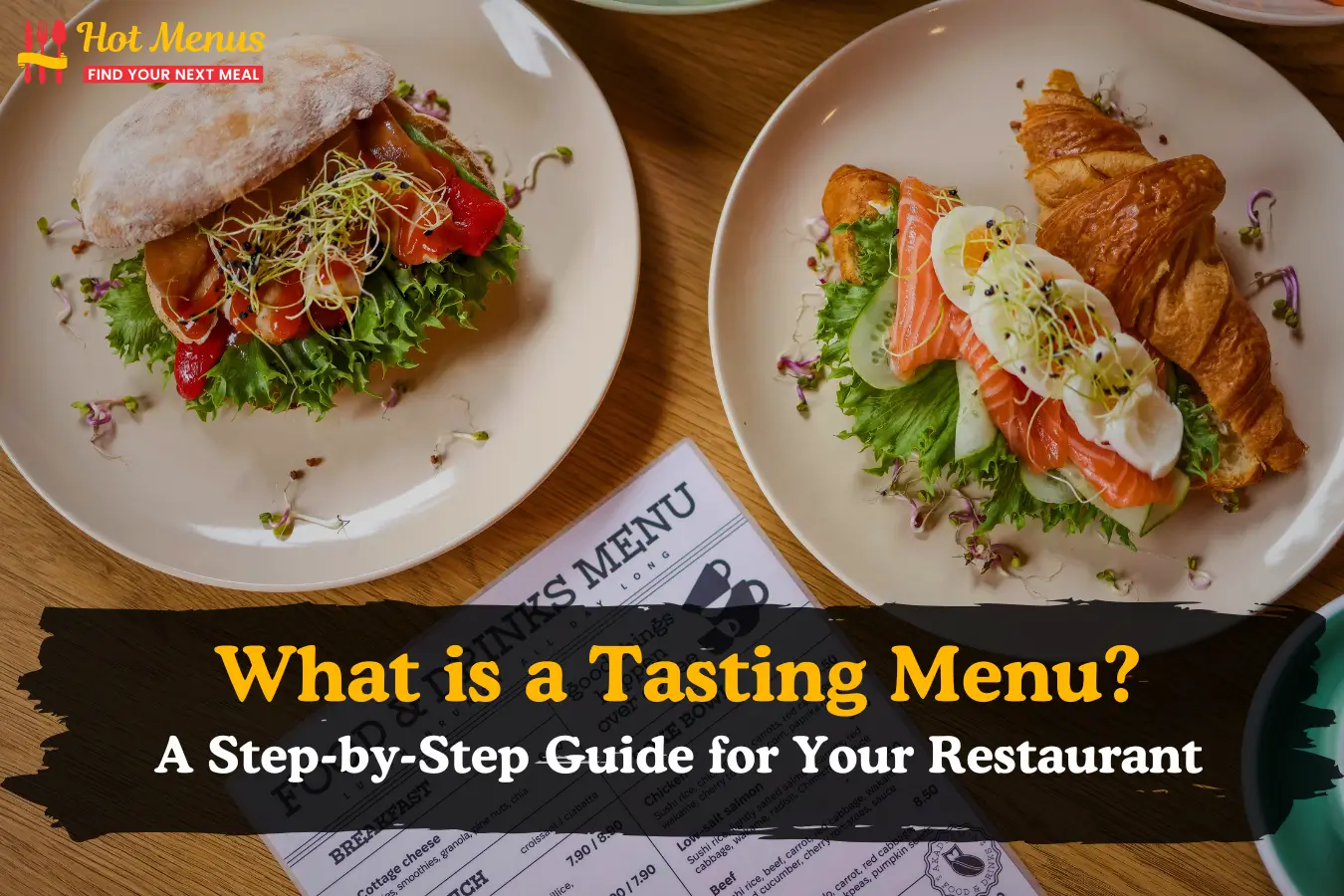A tasting menu is perfect for showcasing your signature dishes and attracting food enthusiasts and critics who seek a satisfying multi-course dinner. The good news is that by leveraging your workforce, you can boost revenue and improve service performance.
Some people want to know about “what is a tasting menu”? It could be just what you need to spice things up and prove to customers that you have what it takes to keep their taste buds satisfied. Tasting menus allow chefs to showcase their skills by delighting and impressing customers with their culinary abilities.
A chef tasting menu features seasonal ingredients, unique flavour pairings, and a thoughtful progression of courses. We’ve covered all you need to know about building and serving this type of menu to your clients.
Overview: What is a Tasting Menu?
The French term for a tasting menu is menu de dégustation, which is unrelated to “disgust” and is entirely connected to gustatory delight. It signifies a thoughtful enjoyment of the tastes, aromas, textures, appearances, and scents of culinary artistry.
However, what is a tasting menu in practical terms?
A tasting menu is a multi-course meal that allows for an exploration of the chef’s artistry and innovation through a variety of dishes that highlight unique and diverse tastes, textures, and techniques. The chef dedicates a great deal of effort to perfecting the menu, which aims to comprehensively showcase the chef’s body of work, frequently featuring key items alongside seasonal components.
Benefits of a dégustation menu
If done correctly, a menu dégustation can benefit your business. Discussing these potential benefits with your chef is essential as you prepare your menu. Here are some benefits of menu degustation:
Higher per-customer revenue
A set menu allows you to charge a premium by showcasing your chef’s originality and culinary expertise through a multi-course meal. This can lead to higher average revenue per customer than à la carte.
Simplified staffing
Because the menu is predetermined, your waitstaff will not have to spend as much time explaining each item or taking complicated orders. This reduces the burden and training needs for front-of-house staff, allowing them to focus on enhancing the overall visitor experience.
The Structure of a Tasting Menu
The concept of the modern tasting menu was first introduced in the 1990s. In culinary terms, that’s the blink of an eye. As a result, there is no singular, entrenched tradition or structure that a restaurant has to stick to. Chefs are free to explore this type of cuisine offering.
- At the same time, regularity has developed in this sector over the decades.
- A typical tasting menu typically includes a selection of dishes ranging from six to ten or even more.
- Each dish is meticulously planned and executed to deliver a consistent progression of flavours and presentation. Some progressions may follow a traditional path from appetizers to sweets, whereas experimental designs deviate from this pattern.
How to prepare a restaurant tasting or prix fixe menu
A dégustation menu involves more than simply selecting and slicing a few favourite items into little amounts. It is essential to remember that you are creating a culinary experience, not just preparing a meal.
Defining Your Restaurant Concept
A precise restaurant menu concept is necessary before designing an online menu, as it forms the foundation for your company’s operations.
A clearly defined idea influences operational decisions, marketing strategies, and the menu for your restaurant. Alignment is essential for attracting the right audience and achieving long-term success.
Organize the menu
After structuring your menu, you can create a prix fixe menu experience by deciding how many courses to serve. Keep in mind that this menu does not require a set number of courses.
Smaller restaurants or menus designed to serve fewer clients will typically have fewer courses than an established restaurant, which may offer up to ten dishes on its set menu.
Decide on the menu theme and layout.
One of the most challenging tasks within the process is deciding what to include in your menu. The dinners you select to include may vary depending on several factors, including the time of year, available resources, and any restaurant themes you wish to participate in.
Cost of menu items
Customer satisfaction is also one consideration in applying menu pricing methods. The reason is that the prices you set can influence buyers’ perceptions of the quality and value of your product. Conduct a thorough cost evaluation of each item before determining the correct price.
Advertise the menu
To ensure high traffic and table turnover, it is essential to promote your service regularly. Make use of all available tools. Promote the event and highlight the restaurant’s themes, cuisine, and pricing to engage your social media followers immediately.
Conclusion
In conclusion, our blog “What is a tasting menu’’ provides a complete guide. It’s just a simple dining experience where guests enjoy a series of small plates and a carefully made meal. It’s like a chance for chefs to show their creativity and present a menu in unique ways. Whether you’re starting a new restaurant or updating your current restaurant, a tasting menu can help boost your revenue, simplify operations, and impress your guests.
For More Info About UK Food Menus Must Visit Hot Menus










